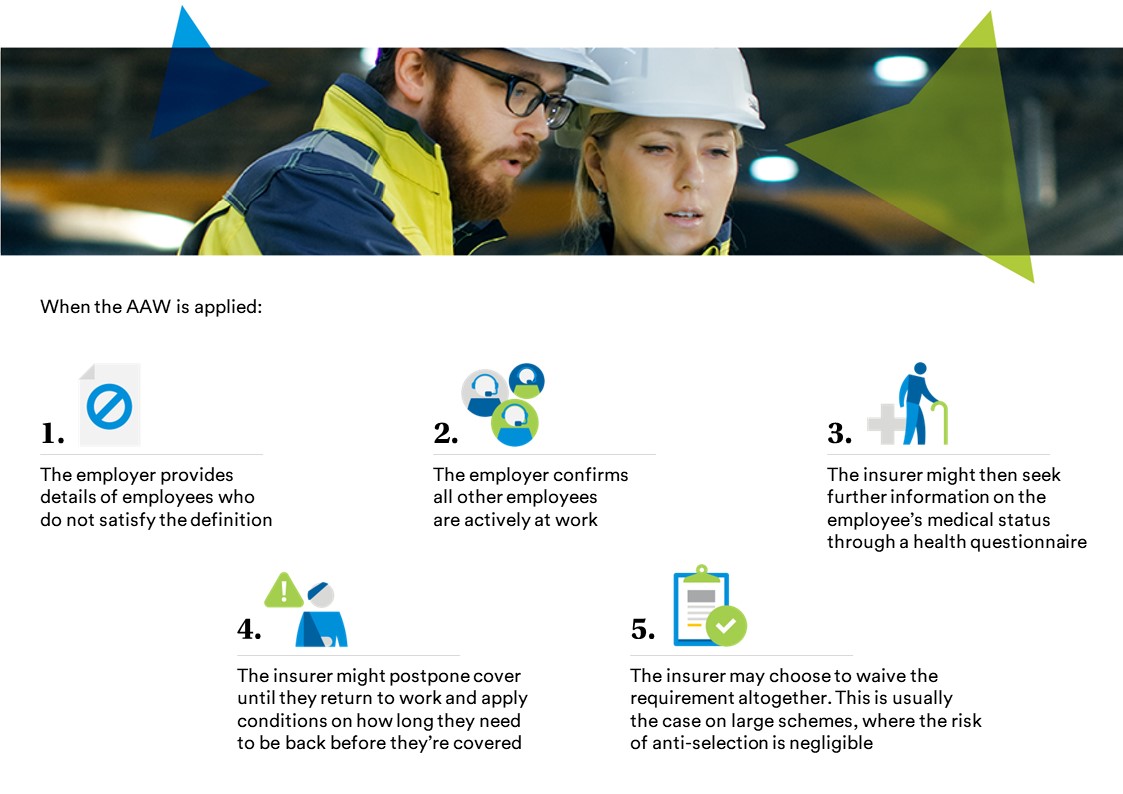Technical
Assessing group life cover requires an insurer to gain an understanding of the risk presented by members of the scheme.
To do this efficiently and avoid the need to medically underwrite each member (subject to any free cover limit that has been given), an insurer may apply an actively at work (AAW) requirement.
This means in order to be covered under the policy from (for example) the policy commencement date, members must be actively at work on the day before the policy commencement date.
MetLife’s Group Life Actively at Work definition is:
“Being actively at work means an employee or partner has not received medical advice to refrain from work and is actively engaged in or is otherwise following their normal occupation, i.e. the employee or partner is mentally and physically capable of working their normal contracted number of hours, either at their usual place of business or at the location to which the business requires them to travel
Absence from work does not include holidays, maternity, paternity and adoption leave, or any other authorised leave approved by the insurer".
This requirement can be applied in a variety of situations including the inception of a new policy; new members joining an existing scheme; or increases in benefit levels.
Snapshot of risk
When the AAW requirement is applied, the employer provides details of any employees and / or partners who, because of sickness or accident, do not satisfy the AAW definition, and confirms that all other employees and / or partners are AAW.
Where an employee does not meet the AAW definition there are a few actions that an insurer can take.
It might seek further information on the employee’s medical status by asking them to complete a health questionnaire.
Another option may be to postpone cover until they return to work, with further conditions applied on how long they need to be back before they are covered. This could be a week or even just a day.
In some instances, the insurer may choose to waive the requirement altogether. This is usually the case on larger schemes, where the risk of anti-selection is negligible.
Actively at Work and group income protection
The AAW requirement can be applied to group income protection policies too. But where an employee does not meet the definition, it is not possible to offer a waiver.
This is because not being actively at work is a trigger for a potential claim under a group income protection policy.
If the scheme was switching from another insurer, an employee who was not actively at work when the new policy commenced would be classed for a potential claim under the previous insurer’s policy and they would need to assess eligibility for benefit.
Once the employee returns to work and meets the AAW definition they would be covered under the new policy.

